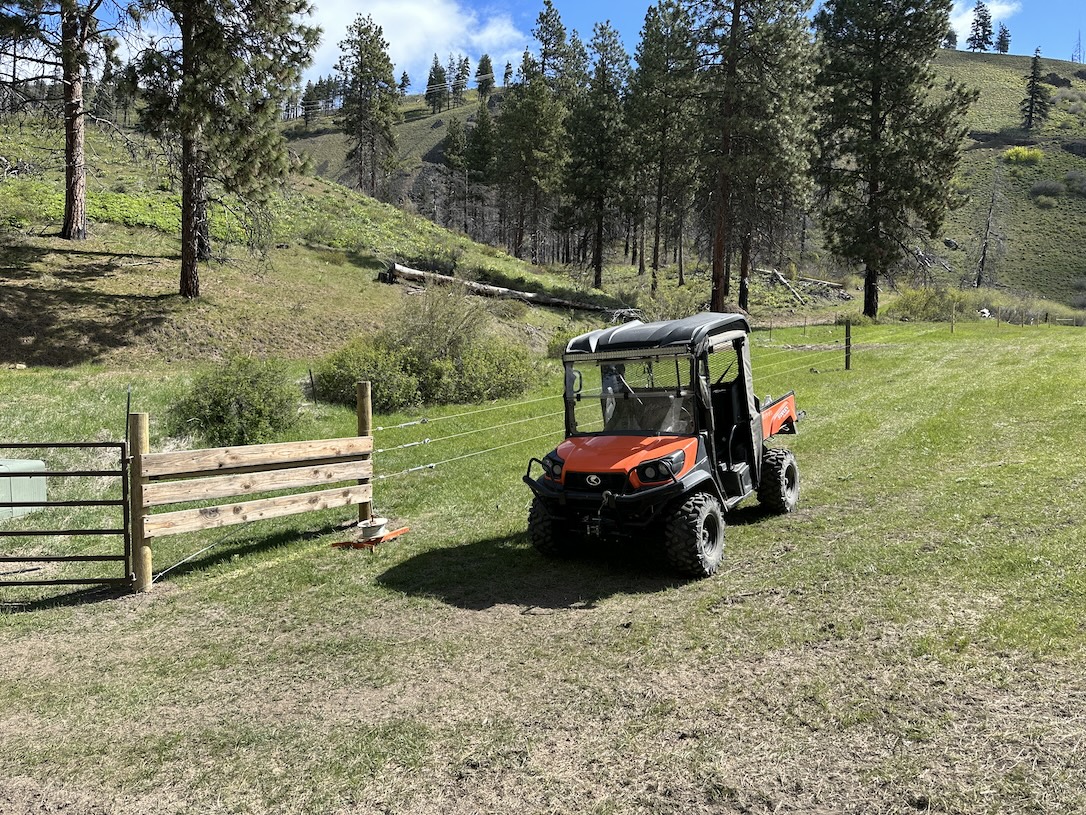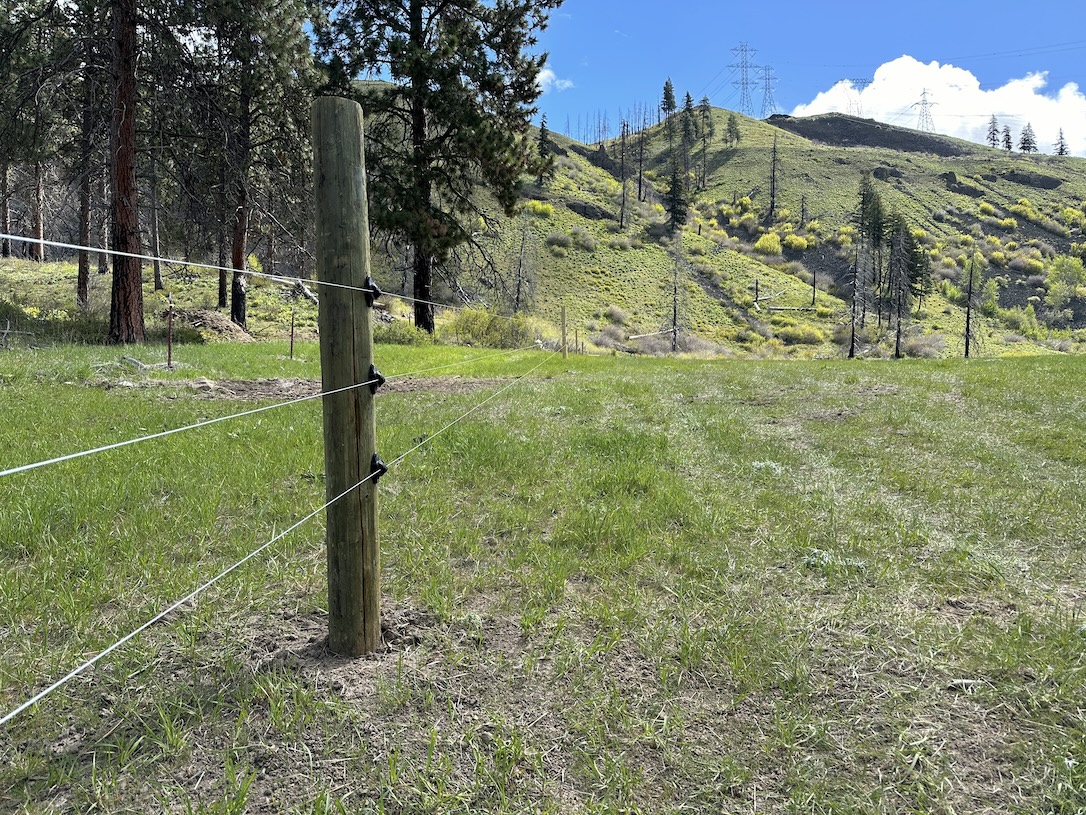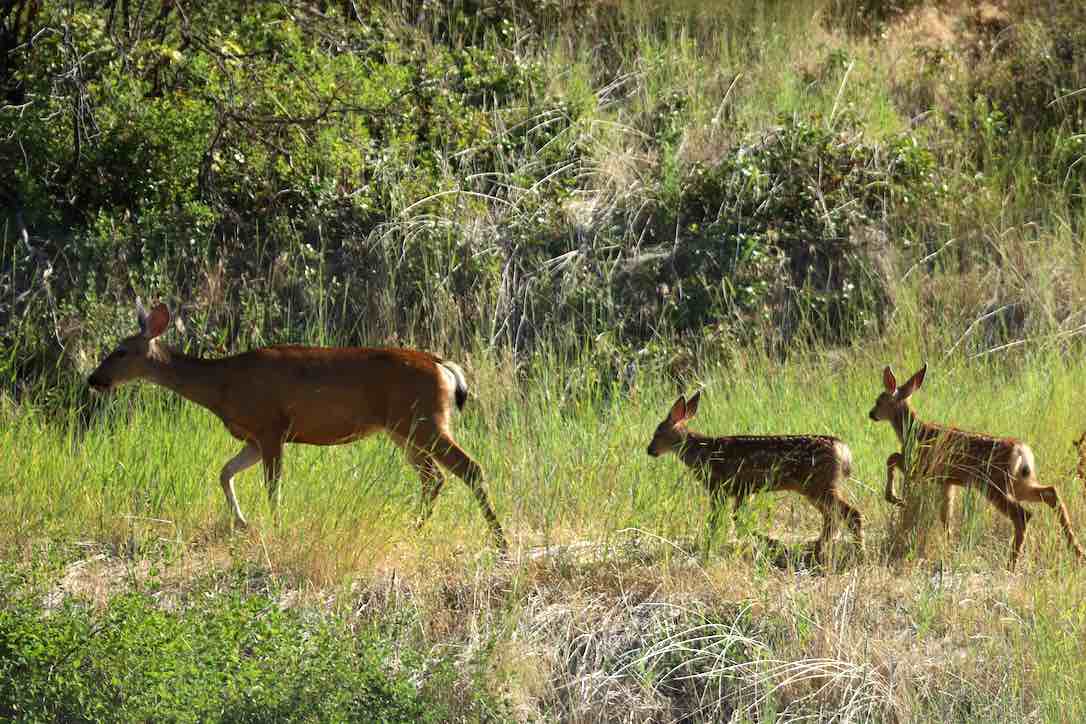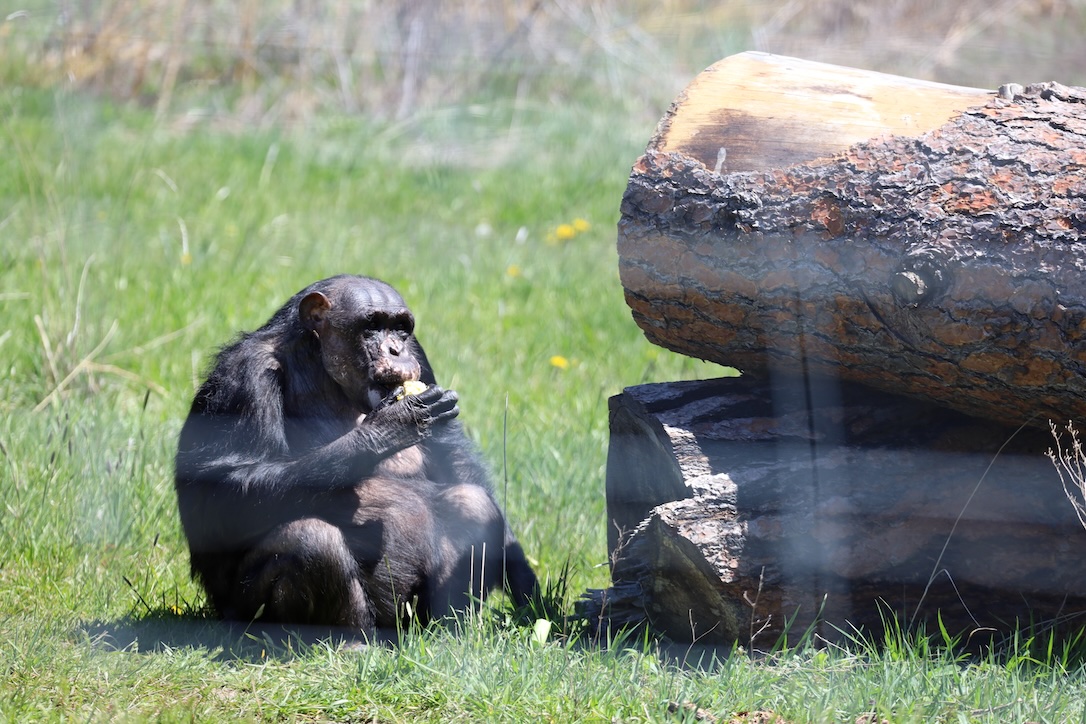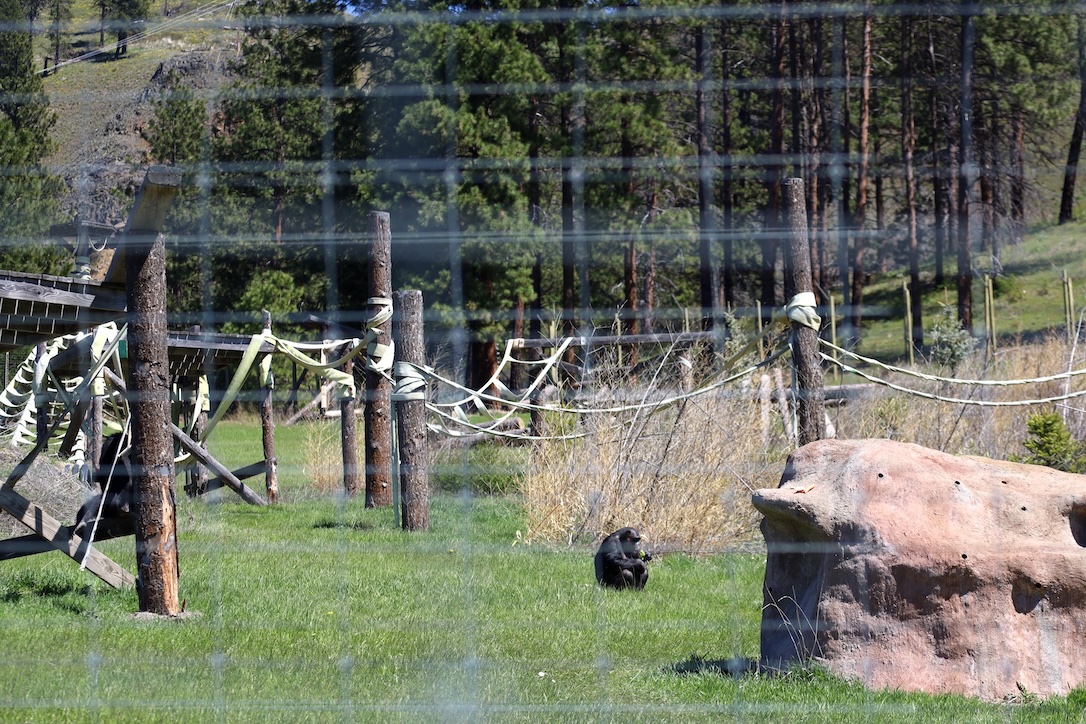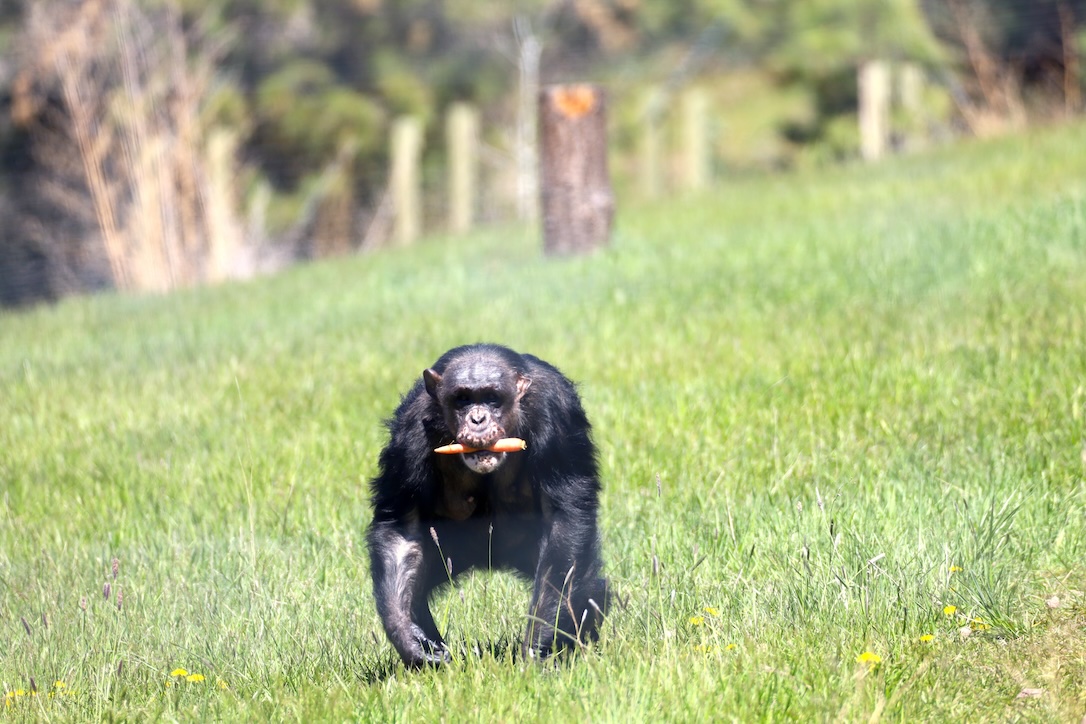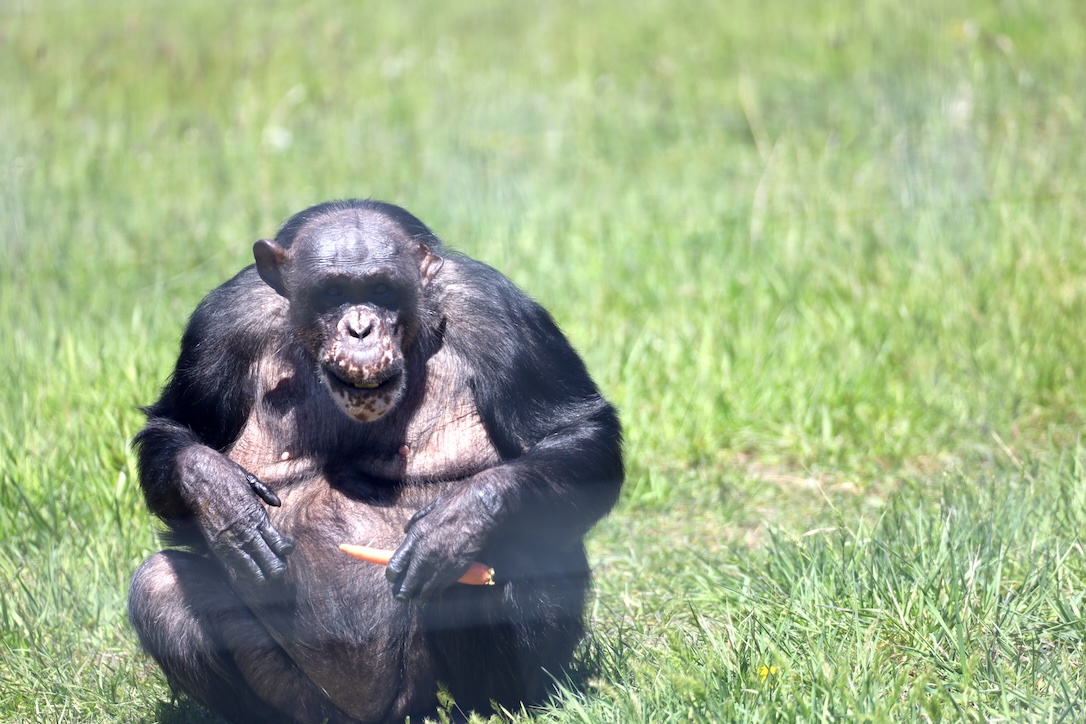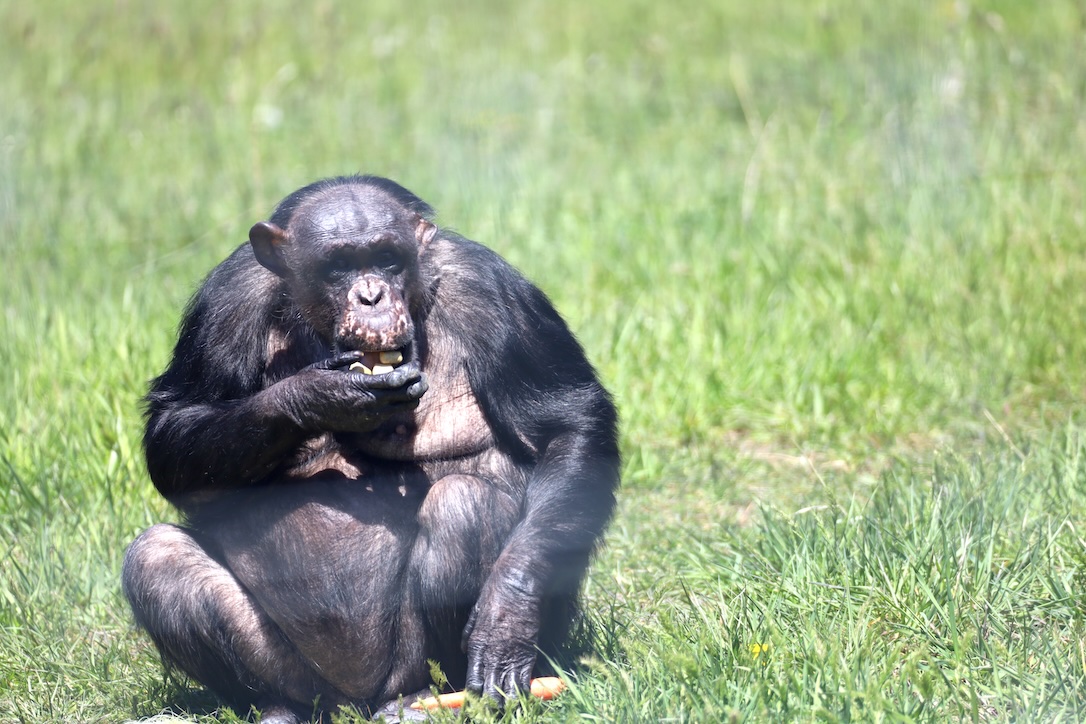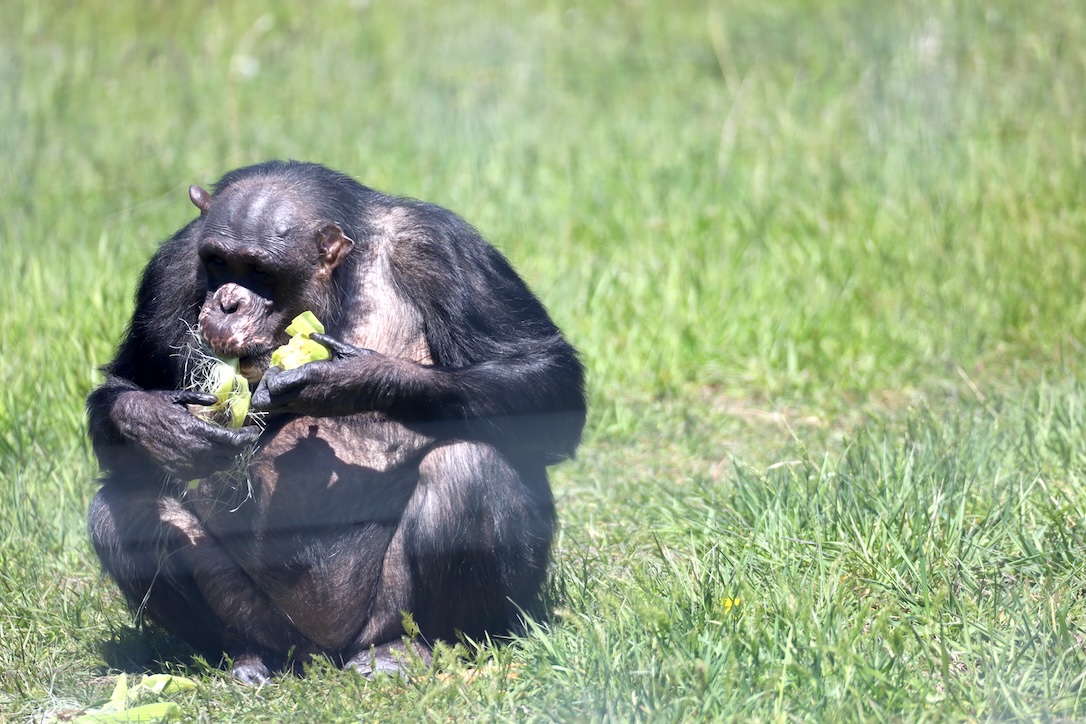What food could possibly be so exciting that a chimpanzee would willingly pass up fresh fruit, peanuts, chow, and smoothie? Why, it’s grass, of course!
Yes, for a few weeks each year the chimpanzees at CSNW become grazers, chomping down on grass at a rate more in line with the cows they share their sanctuary home with. What’s so great about grass? You got me. Wild chimpanzees do naturally consume significant amounts of browse—fibrous foods such as shoots, stems, and leaves—but the chimps at CSNW don’t eat any other browse with the same gusto as they do spring grass. This time of year, the grass is at its sweetest and most tender, as the cows will most certainly attest. But is it really better than smoothie?
Speaking of grazing (and with it being Earth Day and all), I thought I’d mention one of the projects we’ve been working on: Converting our pasture fencing to wildlife-friendly fencing. The original sanctuary property and the four parcels we purchased in recent years were part of a large homestead ranch that was in operation for a least a century. During that time, most of the pastures were fenced using barbed wire or a combination of barbed wire and woven field fence. Unfortunately, we’ve seen firsthand the toll this kind of fencing can take on wildlife. First, there’s the very real risk that wildlife, such as deer or elk, will get injured by or caught up in a fence. And second, there’s the problem of fawns being separated from their mothers as their moms cross over pasture fencing too high for them to jump. After doing a lot of research, we decided to transition to 3-wire high-tensile electric fencing, which can effectively contain our cows while allowing wildlife such as deer, elk, bobcats, and marmots to cross over or under safely. And for pastures no longer in use, the fences can be removed and the areas can be slowly re-wilded. As we work on finalizing our master site plan, we will also do so with an eye toward preserving wildlife migration corridors throughout the 113-acre property. After all, it’s not much of a sanctuary if it’s not also a home for the animals that were here first.
And last but not least, allow me to share some photos of Negra from today’s lunch forage:
